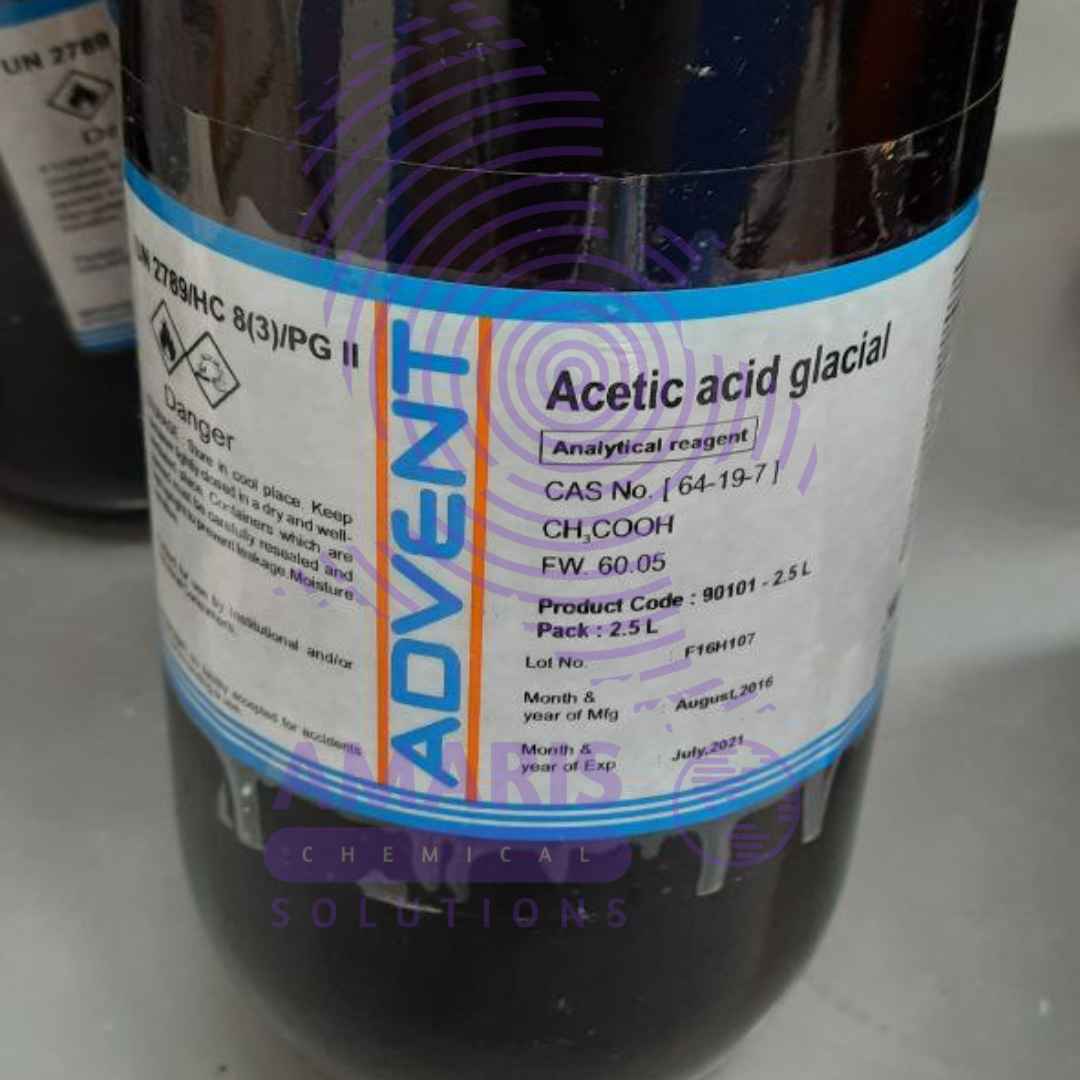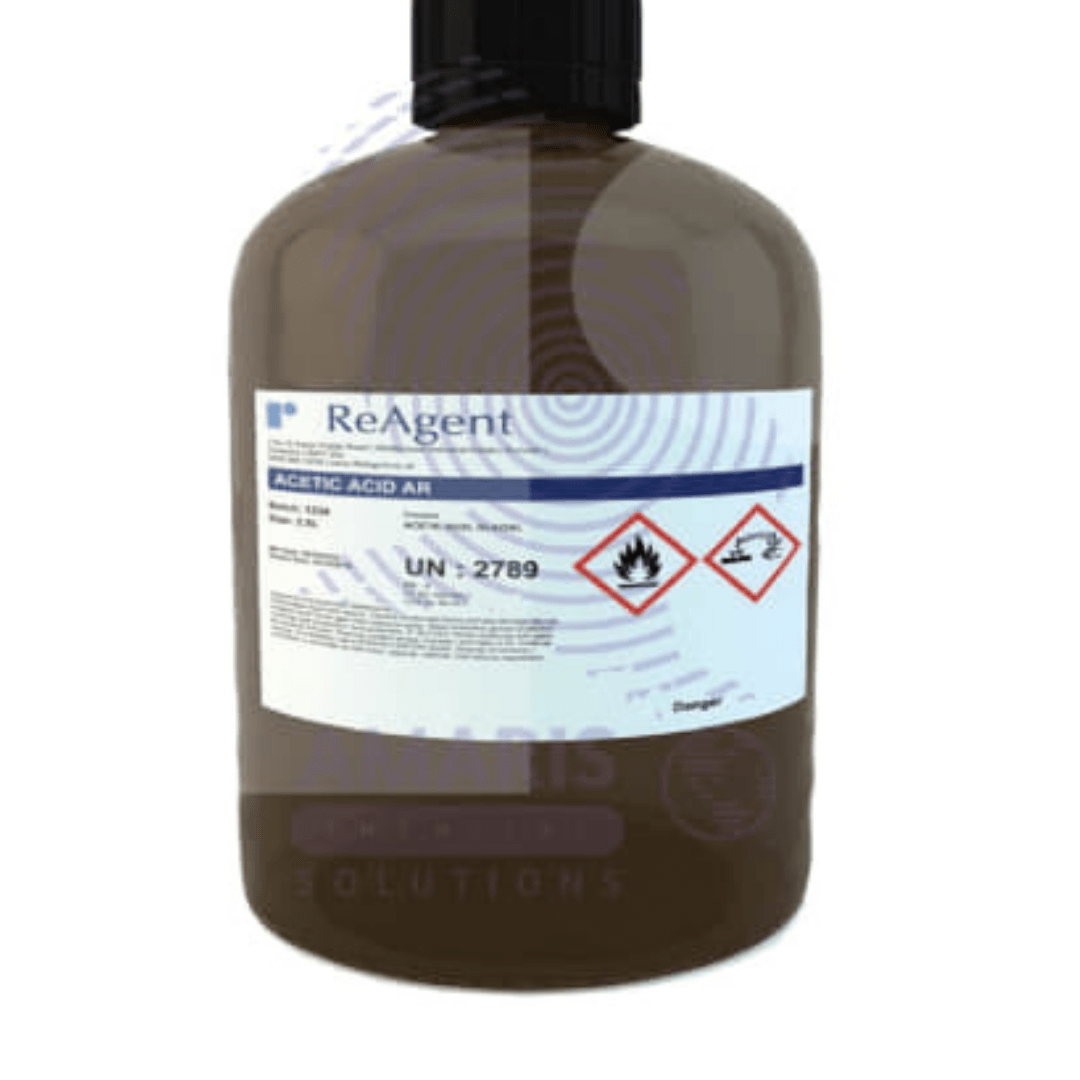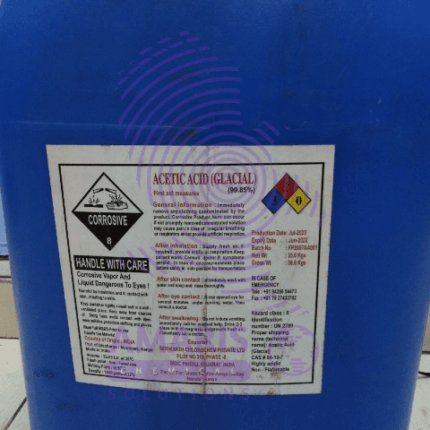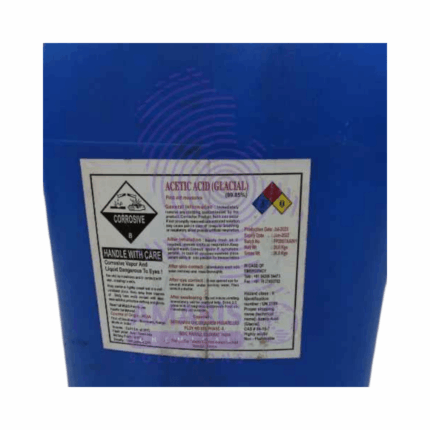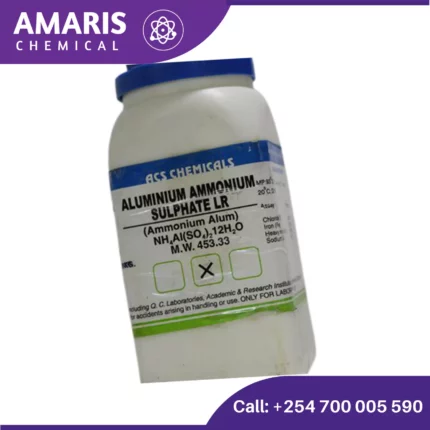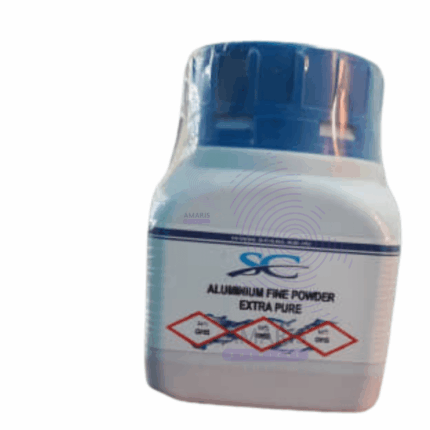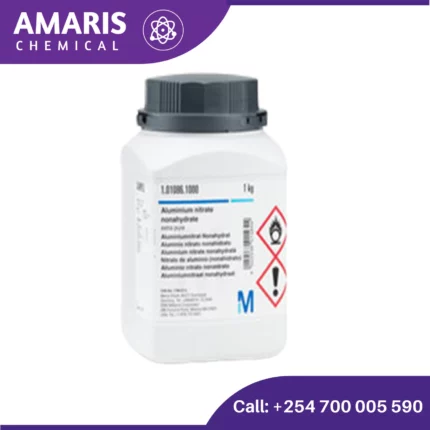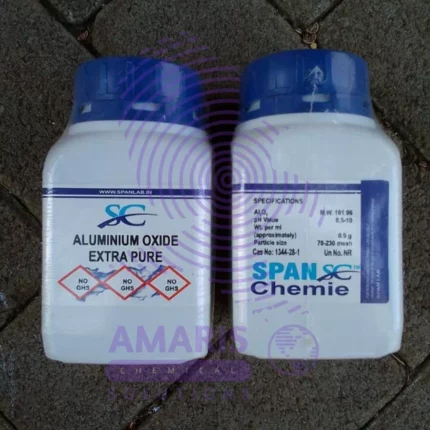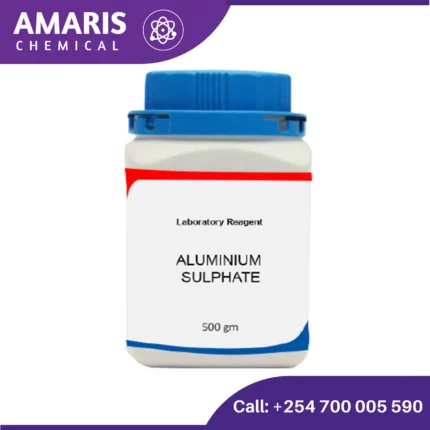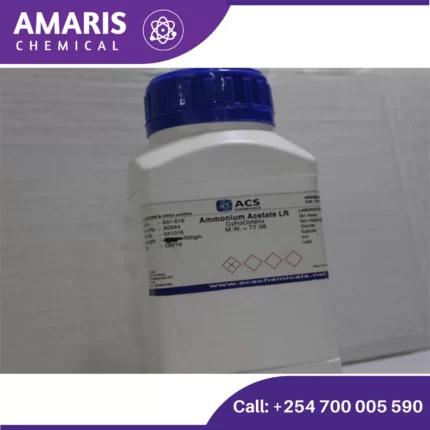“Sodium Thiosulphate 25kg” has been added to your cart. View cart
“Sodium Thiosulphate 25kg” has been added to your cart. View cart
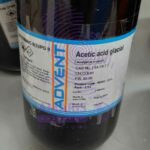
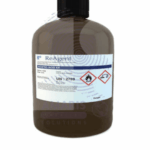
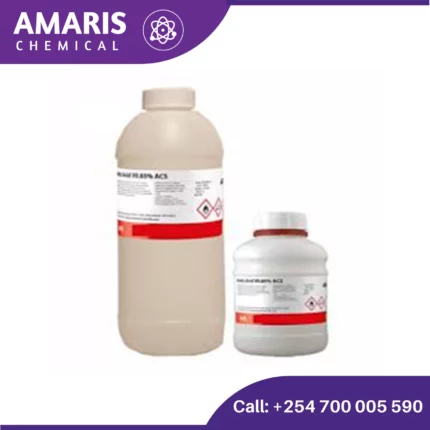
Acetaldehyde
KSh5,430.00 Original price was: KSh5,430.00.KSh4,500.00Current price is: KSh4,500.00.
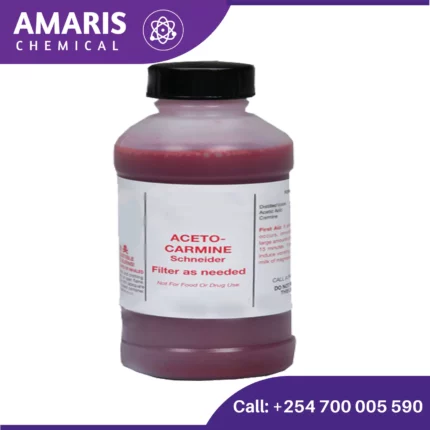
Aceto Carmine 100 ml
KSh1,745.00 Original price was: KSh1,745.00.KSh1,500.00Current price is: KSh1,500.00.
Acetic Acid 2.5litre
KSh1,490.00 Original price was: KSh1,490.00.KSh1,300.00Current price is: KSh1,300.00.
Acetic acid is an organic acid with the chemical formula CH3COOH, also known as ethanoic acid. It is a colorless liquid with a pungent, sour taste and a distinctive vinegar-like odor. Acetic acid is an important industrial chemical used in the production of various products, including solvents, plastics, textiles, and food additives. It is also the main component of vinegar, which is commonly used as a condiment and preservative in cooking and food preparation.
SKU:
ACS84328CHEM0
Category: Analytical Reagents
Description
Acetic Acid
In laboratory settings, acetic acid finds several applications:
- Solvent: Acetic acid is often used as a solvent for various organic compounds, particularly those that are polar or partially polar. It can dissolve a wide range of substances, making it useful for extraction and purification processes.
- Reagent: Acetic acid is commonly used as a reagent in various chemical reactions. For example, it’s used in the synthesis of esters through Fischer esterification reactions. It’s also used in the production of acetic anhydride, a versatile reagent in organic synthesis.
- pH Adjustment: Acetic acid is a weak acid, and its solution can be used to adjust the pH of other solutions. Since it’s a weak acid, it’s less likely to cause drastic changes in pH compared to strong acids like hydrochloric acid or sulfuric acid.
- Titration: Acetic acid solutions are often used in acid-base titrations, especially for the titration of weak bases or as a standard solution in the determination of unknown concentrations of acids or bases.
- Preservative: In microbiological laboratories, acetic acid solutions are sometimes used as preservatives for samples. Its antimicrobial properties help prevent the growth of contaminants in certain types of samples.
- Cleaning: Dilute acetic acid solutions can be used for cleaning laboratory glassware, particularly to remove mineral deposits or organic residues.
- Staining: Acetic acid is used in some staining techniques, especially in histology, to help fix and preserve cellular structures in tissues.
Additional information
| Weight | 2.5 lbs |
|---|
Shipping & Delivery
You may also like…
Glacial Acetic Acid 35kg Tech grade
Acetic acid is an organic acid with the chemical formula CH3COOH, also known as ethanoic acid. It is a colorless liquid with a pungent, sour taste and a distinctive vinegar-like odor. Acetic acid is an important industrial chemical used in the production of various products, including solvents, plastics, textiles, and food additives. It is also the main component of vinegar, which is commonly used as a condiment and preservative in cooking and food preparation.
Glacial Acetic Acid Food Grade 35kg
Acetic acid is an organic acid with the chemical formula CH3COOH, also known as ethanoic acid. It is a colorless liquid with a pungent, sour taste and a distinctive vinegar-like odor. Acetic acid is an important industrial chemical used in the production of various products, including solvents, plastics, textiles, and food additives. It is also the main component of vinegar, which is commonly used as a condiment and preservative in cooking and food preparation.
Related products
Aceto Carmine 100 ml
Aceto carmine is a staining solution used primarily in microscopy to highlight cellular components. It is a mixture of carmine dye and acetic acid. Here’s an overview of its properties, preparation, and uses:
Properties
- Color: Red to purplish-red.
- Solubility: Soluble in water and ethanol.
- Staining Characteristics: Stains chromatin and cytoplasmic components, providing contrast for better visualization under a microscope.
Preparation
- Ingredients:
- Carmine dye: A natural red dye extracted from the cochineal insect.
- Acetic acid: A colorless liquid organic compound with a pungent smell.
- Procedure:
- Dissolve a specific amount of carmine powder in hot distilled water.
- Add glacial acetic acid to the solution.
- Filter the mixture to remove any undissolved particles.
Aluminum Ammonium Sulphate
Aluminum ammonium sulfate, also known as ammonium alum or just alum, is a chemical compound with the formula (NH4)Al(SO4)2·12H2O. It's a white crystalline solid commonly used in water purification, leather tanning, and as a mordant in dyeing textiles.
In water purification, alum acts as a coagulant to remove impurities by causing suspended particles to clump together, making it easier for filtration to remove them. In leather tanning, it helps to stabilize the leather by tightening the collagen fibers. And in dyeing textiles, alum helps the dye adhere to the fabric.
However, it's important to note that excessive exposure to aluminum compounds like alum can be harmful, so it's typically used with caution and proper safety measures.
Aluminum Fine Powder
Aluminum Nitrate 500gm
Aluminum nitrate is a chemical compound with the formula Al(NO3)3. It's a salt composed of aluminum and nitrate ions. It's commonly encountered as a hydrate with varying numbers of water molecules associated with each aluminum nitrate formula unit. It's soluble in water and is often used in various industrial processes, including as a mordant in dyeing fabrics and in the production of aluminum oxide. Additionally, it's used in some chemical reactions and as a component in some types of rocket propellants.
Aluminum Oxide 500 grams
Aluminum oxide, often referred to as alumina, is a chemical compound made up of aluminum and oxygen atoms (Al2O3). It occurs naturally in various minerals, including corundum and bauxite. It is one of the most widely used compounds, valued for its hardness, strength, and resistance to abrasion and corrosion.
Aluminum Potassium Sulphate 500gm
Aluminum Potassium Sulphate, commonly known as potassium alum or potash alum, is a chemical compound with the formula KAl(SO₄)₂·12H₂O. It is a type of alum, a double sulfate salt, and is typically found in its dodecahydrate form. Here are some key points about this compound:
Physical Properties:
- Appearance: Colorless, transparent crystals or white powder.
- Solubility: Soluble in water but insoluble in alcohol.
- Melting Point: Decomposes at high temperatures before melting.
Chemical Properties:
- Molecular Formula: KAl(SO₄)₂·12H₂O
- Molecular Weight: 474.39 g/mol (for the dodecahydrate form)
- Acidity: It is slightly acidic in aqueous solution.
Aluminum Sulphate 500gm
Aluminum sulfate, also known as alum, is a chemical compound with the formula Al2(SO4)3. It's commonly used in water treatment plants as a coagulant to clarify turbid or muddy water by causing suspended particles to clump together and settle out. In addition to water treatment, aluminum sulfate has various other industrial applications, such as in paper manufacturing, dyeing, and as a mordant in textile dyeing to help fix dyes to fabrics.
Ammonia Acetate
Ammonium acetate (NH4C2H3O2) is a chemical compound with various applications and properties. Here are some key points about it:
Properties
- Chemical Formula: NH4C2H3O2
- Molecular Weight: 77.08 g/mol
- Appearance: White, crystalline solid
- Solubility: Highly soluble in water
- Melting Point: Decomposes upon heating

